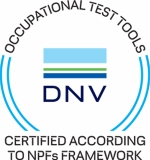Background
What is the Diversity Icebreaker (DI)?
Diversity Icebreaker is a tool used in groups, that has similarities to the psychological personality tests MBTI and DISC. However, the categories used, Red, Blue and Green, are not rooted in psychological personality theory, but in ordinary people's categorisation of communication styles. Diversity Icebreaker was developed in a Norwegian context and has been the market leader of its kind in Norway for the past 10 years. The questionnaire is now available in 19 languages, and more than 450,000 have so far responded to DI. We estimate that approximately 12,000 workshops with this concept have been conducted over the past 20 years.
From Norway to the rest of the world
Diversity Icebreaker is now used in more than 80 countries and is the only original Norwegian HR concept that has been so successful internationally. Internationally, a number of academic institutions have been customers, including IMD, INSEAD and the Centre for Creative Leadership, as well as global organisations such as the UN Climate Change Secretariat in Bonn.
A combination of several professional traditions
The Diversity Icebreaker concept can best be understood theoretically by combining several more modern academic traditions beyond personality psychology. Relevant disciplines include sociology, linguistics and pedagogy. A key success factor has not been established research, but a strong degree of involvement and contextual interpretation. The concept has been presented at numerous professional and academic conferences since 2006. A number of research studies, articles and books have been produced in an international setting.
Structured workshop format
The concept is a structured seminar format that starts with participants answering the Diversity Icebreaker questionnaire to map their preferences for Red, Blue and Green communication styles. The three dimensions are then applied in group exercises - sometimes in groups with the same communication preferences, sometimes with mixed preferences. The seminars end with a collective reflection on how the participants have created meaning in the encounter with the test.
Participants co-create a common language of diversity with categories of equal value, complementing each other in a balanced and respectful way. This promotes a culture of inclusion and learning.
Research in new areas
Diversity Icebreaker's internationalisation began in 1999 when Bjørn Z. Ekelund of Human Factors AS brought the concept to create a common platform across cultures in the context of the OSCE's mission to develop democracy in Bosnia. Recently, there have been various people and issues in other countries that see DI as a potentially value-creating contribution. One example of this is Rob Elkington at Trent University in Canada, who seeks to understand alternative social models relevant to a more ecologically orientated future. He and his colleagues are studying indigenous peoples and other non-Western European social models. In Norway, Kwame Dako, a Norwegian-Ghanaian leader in the municipality of Sandnes, has combined the South African UBUNTU with Diversity Icbreaker for more than 2,000 employees. In the spring of 2024, funding was granted in Canada to conduct qualitative studies of the effect of these seminars in Sandnes.
